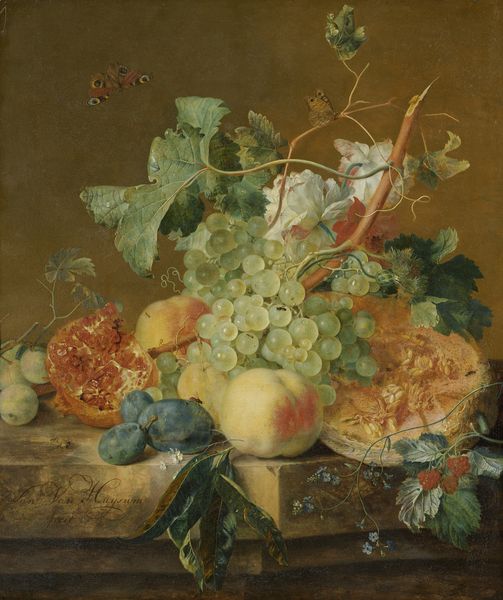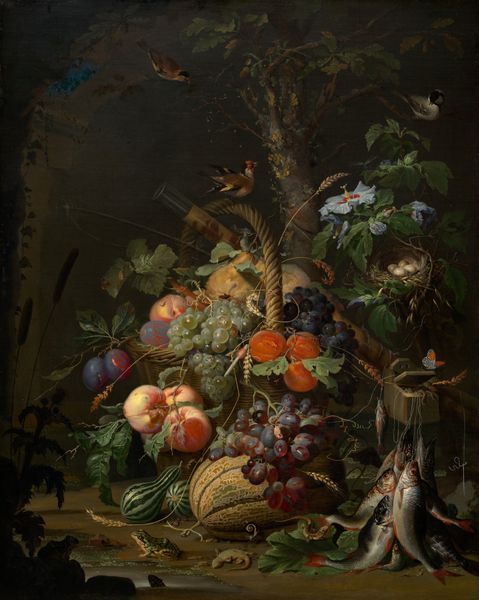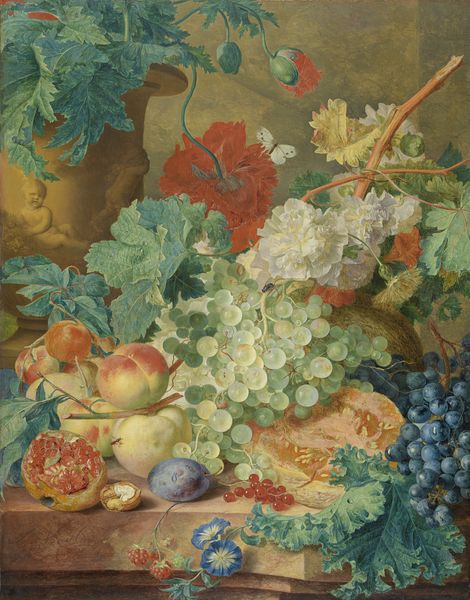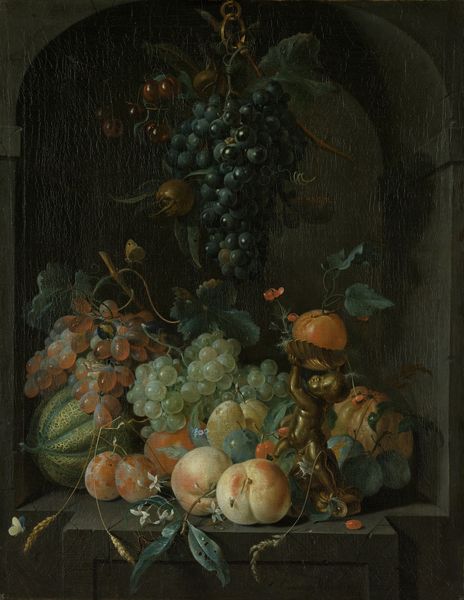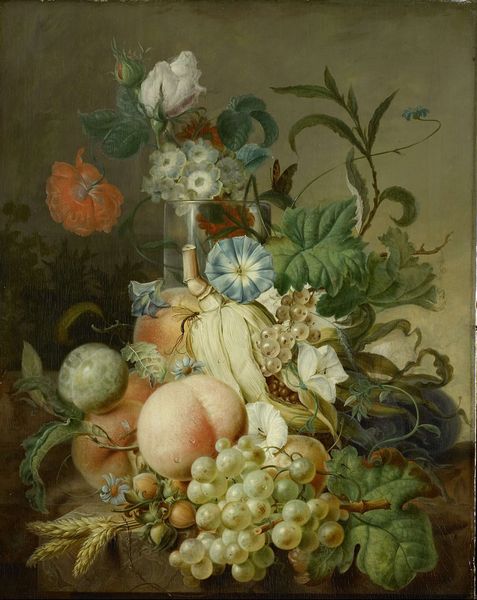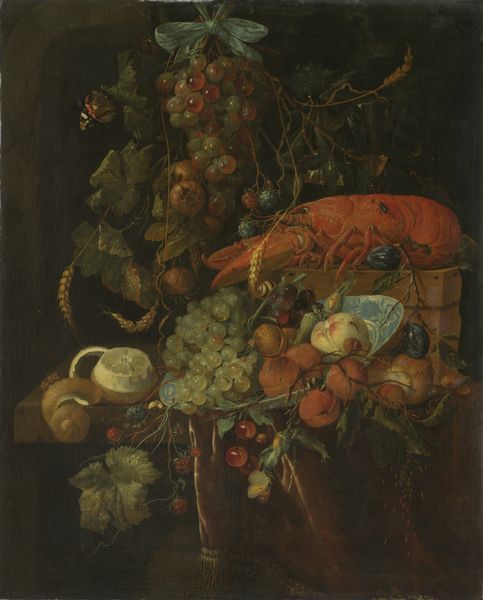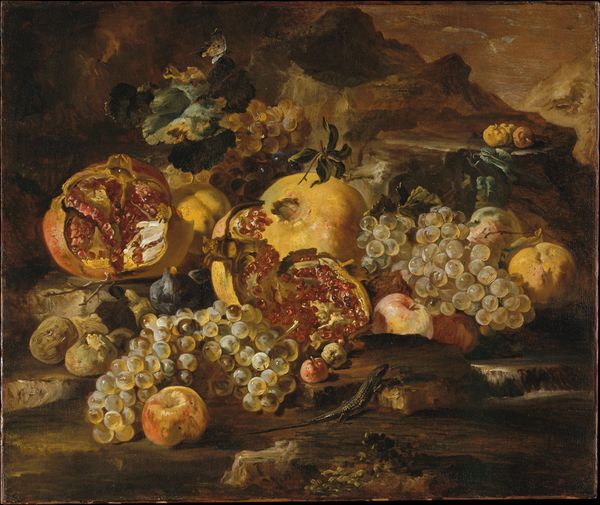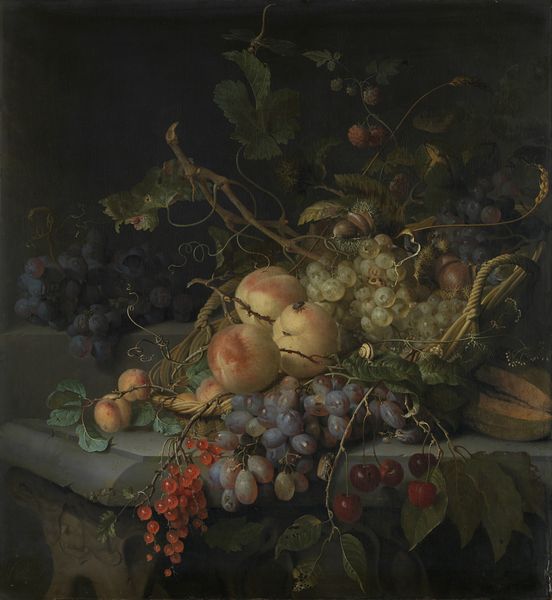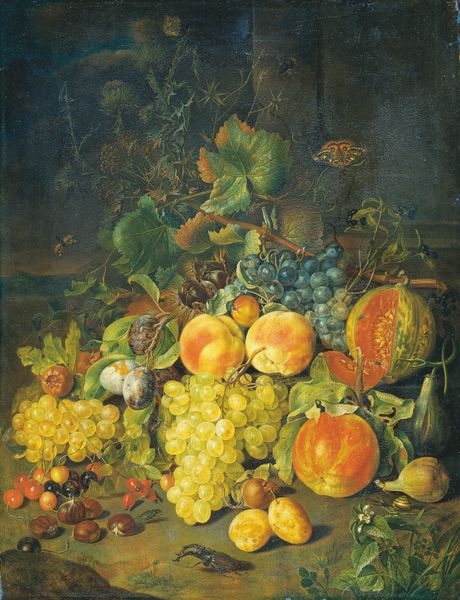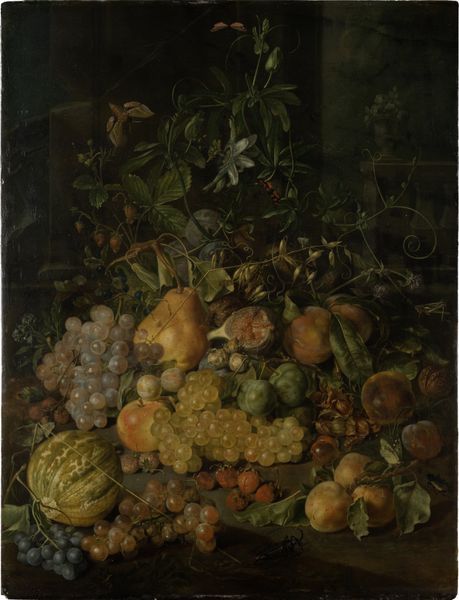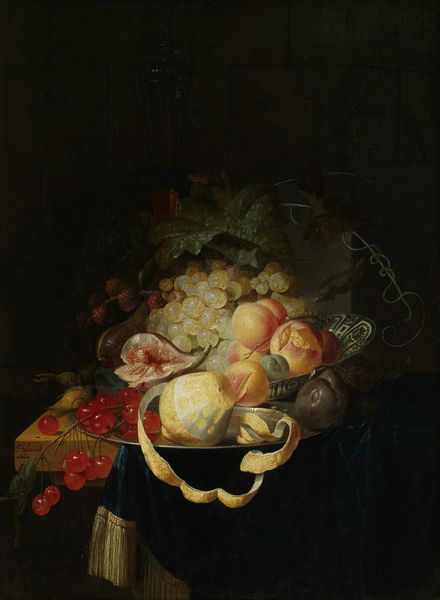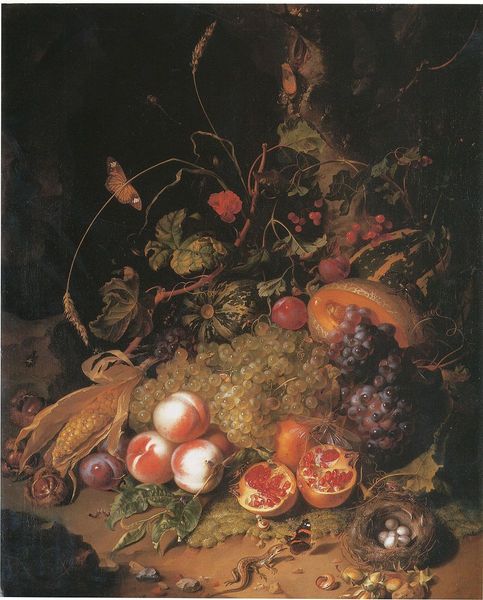
oil-paint
#
baroque
#
oil-paint
#
oil painting
#
fruit
Dimensions: support height 66 cm, support width 49.5 cm, outer size depth 8 cm
Copyright: Rijks Museum: Open Domain
Editor: We’re looking at "Bunches of Grapes, Pomegranates and Figs in a Landscape" by Abraham Brueghel, painted around 1670 using oil paint. The textures and the colors have a strong appeal. I'm intrigued by the deep shadows and how they make the fruit almost leap off the canvas. How do you interpret this work formally? Curator: It's a compelling display of Baroque aesthetics, isn't it? The composition emphasizes diagonal lines, leading the eye from the top left down to the scattered fruit. Observe how Brueghel uses light and shadow – what the Italians called "chiaroscuro". The grapes, for example, possess a translucence that contrasts sharply with the opaque skin of the pomegranates. Note the deliberate arrangement, the carefully considered distribution of forms to achieve balance and visual interest. Are you drawn to any particular element? Editor: The opened pomegranate really grabs my attention; it’s such a strong focal point with the scattered seeds. Curator: Precisely! Consider the use of color in this specific area. The juxtaposition of the vibrant red seeds against the muted tones of the figs creates a dramatic contrast. This strategic deployment of colour creates focal points, energizing the eye's journey throughout the entire structure of the painting. Editor: So, focusing on color, light and structure gives us a way of understanding what's interesting or dynamic about this still life? Curator: Precisely. A Formalist approach like this allows us to investigate an artwork on its own merits, appreciating the ways in which the visual elements engage us, beyond any historical or cultural references. Editor: That makes a lot of sense. It's really fascinating to look at it that way. Curator: Indeed. Hopefully, considering those details will help inform the audience.
Comments
No comments
Be the first to comment and join the conversation on the ultimate creative platform.
